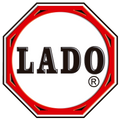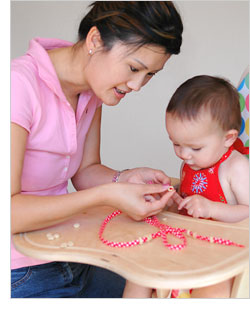"At birth, all of their babies' organs – heart, lungs, kidneys – are fully developed. They are only smaller than adult organs. With one exception: the brain.
Between the sixth week and the fifth month of pregnancy, approximately 100 billion brain cells develop in a baby's brain! Some of these brain cells are connected at birth, but most are not. Precisely, during the first five years of life, the infant brain makes a great effort to establish these brain connections. Have you ever seen what happens when you walk over and over again in the same direction in deep snow or tall grass? A path is formed. Something similar happens as the brain develops. Every time your babies use one of their senses – sight, taste, touch, hearing and smell – a new connection or pathway is created. If a child has various kinds of experiences and these experiences are repeated over and over again, the stronger the brain connections are. The way your children think, feel, behave and learn depends on these connections." (Diane Trister Dodge and Cate Heroman )
A parent concerned about the stimulation of his son does not limit himself to keeping him entertained with movies or going to the park, but seeks some time to organize the most appropriate games for his age and thus provoke the appearance of thousands of stimuli and learning opportunities for his son.
They suggest countless games:
- Lay the baby on his back and move a bell or rattle from side to side, so that he searches for the sound when he hears it.
- Place the baby on its side, causing it to “roll” onto its back or stomach.
- Talk from the front to the baby close to one ear and the other and from behind so that he turns his head.
- Lay the baby on his stomach and put toys a little farther away so that he tries to reach them, help him by placing his hands on the soles of his feet.
- With a brush, feather or cotton, caress the baby's soles, between the fingers, the neck, the neck, the face, the whole body.
- Place toys under a blanket and rattle them so the baby can identify where they come from.
- Sit the baby in front of a mirror, name him and touch different parts of his body.
- Sit next to the baby and place different objects and mention the name of the object three times in a row, wait to see if the baby takes what you have indicated; between 11 and 12 months, some babies perform it.
- Blog Specialized in Early Stimulation and Child Development - http://estimulacionydesarrollo.blogspot.com.es/search/label/estimulaci%C3%B3n%20temprana
- Evolution of the psychomotor development of the baby http://www.elbebe.com/bebes/bebes-desarrollo-psicomotor
- Stimulation exercises for 2-year-old children - http://www.mamilogopeda.com/2007/11/estimulacin-para-nios-de-2-aos.html



Quisiera contactarme con ustedes y conocer más… Para realizar seminarios, talleres en la facultad de educación de la UNAP… Les dejó mí número de celular 996308631, espero sus respuestas… Gracias
como puedo hacer unmanta didactica
Hola Elizabeth… ¿Podrías repetirnos la pregunta? Gracias
Leave a comment